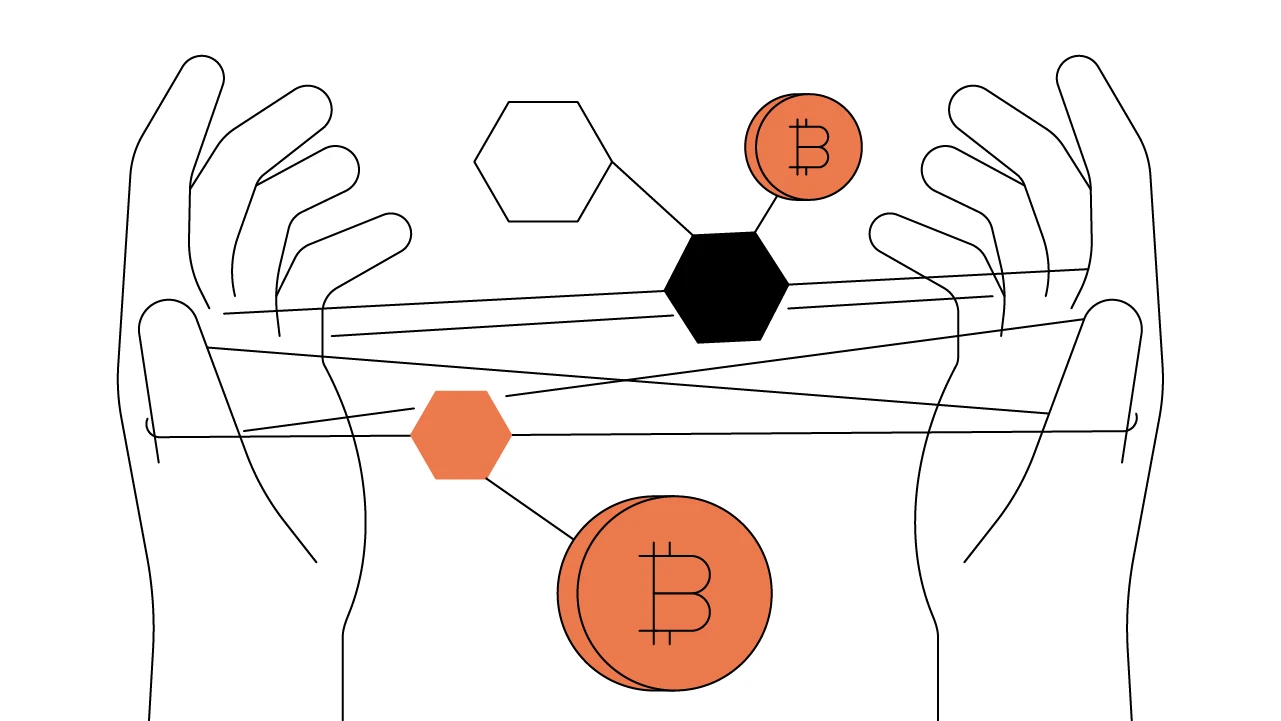Contents
What Is Proof-of-Stake (PoS) in Crypto, and How Does It Work?
Learn about Proof-of-Stake (PoS) in cryptocurrency, including what it is, how it works, and why it’s energy-efficient.
Updated January 22, 2025 • 5 min read

Summary
Blockchain technology relies on consensus mechanisms to validate and secure transactions across networks. Proof-of-Stake (PoS) has emerged as one of the most popular and efficient blockchain consensus mechanisms, gaining favor due to its energy efficiency, scalability, and broad applicability. Unlike the more energy-intensive Proof-of-Work (PoW), PoS provides a path toward a more sustainable blockchain ecosystem. This article explores what PoS is, how it works, and the cryptocurrencies that utilize it.
What Is Proof-of-Stake (PoS)?
A proof-of-stake consensus mechanism is one in which validator nodes — those responsible for confirming cryptocurrency transactions and maintaining the blockchain network — are selected based on the number of coins they stake or lock up, as collateral.
Unlike PoW, which requires miners to compete by solving complex mathematical problems, PoS allows validators to participate based on their economic stake in the network.
Unlock the future of money on Gemini
Start your crypto journey in minutes on the trusted crypto-native finance platform
The proof-of-stake system was designed as an eco-friendly alternative to PoW, which requires less energy due to its computational demands. In PoS, validators are incentivized to act in the network’s best interest since they risk losing their stake if they act maliciously or negligently.
This alignment of economic incentives with network security has made PoS increasingly popular, especially among new projects and networks transitioning from PoW to PoS, such as Ethereum.
Proof of Stake vs. Proof of Work
Proof-of-Work, used in networks like Bitcoin (BTC), was the first consensus mechanism developed for blockchain and has played a foundational role in cryptocurrency. However, the crypto mining involved expends significant computational power, consuming vast amounts of energy and contributing to an environmental impact.
PoS, by contrast, offers a more sustainable solution by enabling validators to participate without heavy computational needs.
In PoS, validators are selected based on the number of tokens they hold and are willing to lock up as collateral. This method preserves network security and reduces energy consumption, making PoS a greener alternative to PoW.
How Does Proof-of-Stake Work?
In PoS systems, staking involves “locking up” a certain amount of cryptocurrency in a wallet as a commitment to supporting the network. This process signals a validator’s dedication to maintaining the network’s security and reliability.
Validators in PoS are chosen to propose and validate blocks of transactions based on the tokens they have staked. While different networks have unique selection criteria, generally, a larger stake improves the odds of selection, as higher-staked validators have more to lose by acting maliciously.
Validators are rewarded for correctly validating transactions, usually with transaction fees or additional tokens. However, to ensure trustworthiness, PoS systems penalize malicious or incorrect actions. If a validator acts against the network’s interests, a portion or all of their staked tokens may be forfeited — a process known as “slashing.”
What Are the Advantages of Proof-of-Stake?
Proof-of-Stake has a handful of advantages — here’s a rundown of the main benefits:
Energy Efficiency
Because PoS does not require the vast computational resources necessary for PoW, it uses a fraction of the energy. Some estimates indicate PoS reduces energy consumption by over 99% compared to PoW.
Scalability
PoS allows networks to handle more transactions per second, improving scalability and making it ideal for networks aiming to expand and enhance user experience. Networks operating under PoS can support higher transaction volumes, which is essential as blockchain adoption grows.
Security
By requiring validators to stake tokens, PoS aligns their economic interests with the network’s stability. The threat of slashing acts as a strong deterrent against malicious actions, as validators have a significant financial incentive to act honestly. This approach enhances security, even in decentralized environments.
Decentralization
PoS can support decentralization by offering staking pools and delegation options. Smaller holders who might not have the resources to become full validators can pool their stakes or delegate them to a larger validator. This inclusivity enables broader participation in the network’s operations, enhancing decentralization.
What Are Some Popular Proof-of-Stake Coins?
A number of prominent cryptocurrencies utilize PoS or variants of it. Here are some of the most widely used examples:
Ethereum (ETH)
Ethereum transitioned from PoW to PoS in 2022 through a process known as “The Merge,” reducing its energy consumption by over 99%. Ethereum’s PoS model selects validators who stake ETH and has enabled Ethereum to scale more efficiently than was possible with PoW.
Cardano (ADA)
Cardano uses a PoS protocol known as Ouroboros, which was developed with scalability and security in mind. As one of the pioneering PoS models, Ouroboros emphasizes sustainable and secure validation, helping Cardano build a reputation as a reliable network.
Polkadot (DOT)
Polkadot operates on a Nominated Proof-of-Stake (NPoS) system, which allows token holders to either validate directly or nominate others as validators. This approach provides flexibility and supports a decentralized validator community, enhancing network security.
Tezos (XTZ)
Tezos employs a model known as Liquid Proof-of-Stake (LPoS), allowing holders to delegate their staking rights to others without transferring ownership of their tokens. LPoS adds a layer of flexibility to staking, making Tezos a popular choice for those interested in indirect participation in network security.
Solana (SOL)
Solana’s high-speed blockchain operates with a hybrid model of PoS and Proof-of-History (PoH), which enhances transaction speed. This model makes Solana one of the fastest networks, with its combination of PoS and PoH providing both efficiency and scalability.
Are There Risks Associated With Proof-of-Stake?
Proof-of-Stake does have a few potential drawbacks. Here’s what you should keep in mind.
Centralization Risks
PoS networks face concerns about potential central authority, as larger holders have a higher chance of being selected as validators and, over time, could accumulate disproportionate influence. If these stakeholders acquire too much control, they could affect decision-making and governance on the network, challenging the network’s decentralized ideals.
Security Concerns
Although PoS offers great security, validators are still required to maintain strict security practices. Malicious actors or compromised validators could theoretically disrupt the network. Networks attempt to mitigate this through slashing and reputation systems, but validators need to exercise caution and follow best practices.
Liquidity Constraints
Staking locks up funds for extended periods, reducing liquidity for holders. In some cases, PoS networks have mechanisms allowing staked tokens to be traded in secondary markets, but this can be complex and may incur additional fees.
Technical Complexity
Setting up and managing a staking operation can be more complex than simply holding tokens. Validators need to stay current on network protocols and ensure they meet security standards, as any misstep could lead to slashing penalties. Those considering staking should assess their ability to manage these responsibilities effectively.
How To Start Staking in PoS
Interested in staking? Here’s a general step-by-step guide to help you get started:
Choose a PoS Network: Begin by selecting a PoS network that suits your goals. Popular options include Ethereum, Cardano, and Polkadot, each with unique features and staking rewards.
Acquire Tokens: Purchase the cryptocurrency of the network you’re interested in staking. The amount you choose will impact your potential rewards, especially if you plan to stake directly rather than joining a pool.
Select a Wallet: Use a compatible wallet that supports staking. Many crypto exchanges and decentralized wallets offer staking features, making it easier for users to participate without needing technical expertise.
Stake Your Tokens: Transfer your tokens to the wallet, then follow the staking instructions specific to your chosen network.
Staking Pools
For holders with fewer tokens, staking pools offer an opportunity to participate in staking without the financial burden of becoming a full validator. In a staking pool, users combine their holdings to increase their chances of selection. When the pool’s validators receive rewards, the earnings are shared proportionally among participants based on their contributions.
Potential Earnings
Staking returns vary significantly by network. Ethereum’s staking yields have ranged from 4-8% annually, while others offer higher initial returns to attract new network participants.
However, it’s essential to research each network’s rewards and fees, as staking rewards are often affected by market dynamics, network demand, and the risks associated with each network.
The Bottom Line
Proof-of-Stake has transformed the cryptocurrency landscape by offering an eco-friendly, scalable, and secure alternative to energy-intensive Proof-of-Work models.
By aligning validators’ economic incentives with network security, PoS has become a consensus mechanism of choice for new and transitioning blockchains alike. With options like staking pools, delegation, and liquid staking, PoS provides accessible pathways for investors of all levels to participate in blockchain security and potentially earn rewards.
As PoS technology continues to evolve, it will likely drive further adoption of blockchain and decentralized applications, opening new possibilities for sustainable crypto solutions in the years ahead.
Cryptopedia does not guarantee the reliability of the Site content and shall not be held liable for any errors, omissions, or inaccuracies. The opinions and views expressed in any Cryptopedia article are solely those of the author(s) and do not reflect the opinions of Gemini or its management. The information provided on the Site is for informational purposes only, and it does not constitute an endorsement of any of the products and services discussed or investment, financial, or trading advice. A qualified professional should be consulted prior to making financial decisions. Please visit our Cryptopedia Site Policy to learn more.

Is this article helpful?


